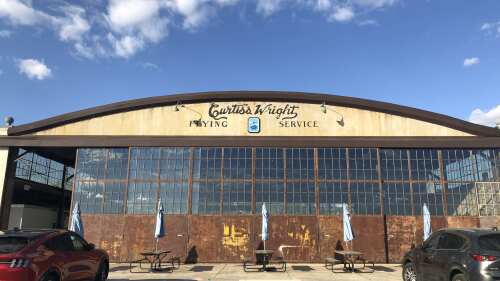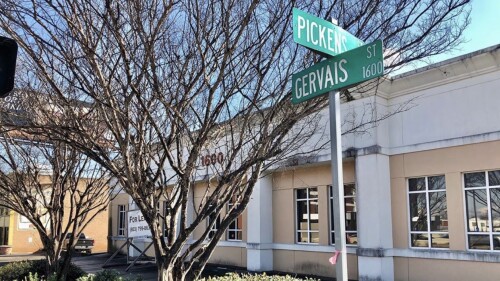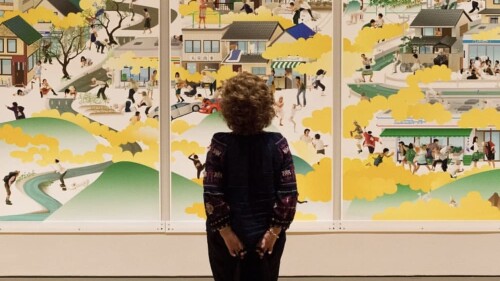#TBT
This is part of our #TBT series in collaboration with Historic Columbia.
The greenest building is the one that’s already built.
It’s the most wonderful time of the year—Preservation Month! Since 1973, National Preservation Month has given folks a chance to celebrate the works of businesses, private citizens, state agencies, and nonprofits (like Historic Columbia) doing their part to preserve our country’s built heritage. These folks are instilling community pride, promoting tourism, and demonstrating the economic and ecological benefits of historic preservation.

Marks Building side-by-side | photo by @HistoricColumbia
Why is preservation important?
Not only does historic preservation solidify a community’s past, it can also help strengthen the future. Historic buildings create vibrant downtowns that draw heritage tourism, art, festivals and a whole host of other activities throughout the year. (That translates to a healthy boost in the local economy annually.)

Image courtesy of Scott Sidler, The Craftsman Blog
To celebrate in 2019, we thought we would share a few benefits for restoring your historic windows.
Restore, Don’t Replace
1) Preservation for the Planet
When it comes down to it, one of the chief benefits of preserving your historic windows is environmental impact. An immeasurable amount of energy has already been spent on your existing windows—designing, manufacturing, installing and maintaining them. Not to mention the material cost. By replacing historic windows with new, vinyl ones, you waste existing material (wood, glass, aluminum) and needlessly use new resources (plastic, silicone, epoxy). Eventually, something is going to end up in a landfill.

The windows of the Curtis-Wright Hangar, now home to Hunter Gatherer, were all restored by hand in 2017. | Image courtesy of Historic Columbia.
2) Property Values
There’s no question that historic buildings and districts attract commerce. Just look at Cottontown, Main Street and the Vista. People are drawn to what preservationists and historians call a “sense of place”—that feeling you get when you’re in a space that feels established and well-worn. Preserving historic windows contributes to the overall historic fabric that makes these places so special. There is a certain atmosphere that comes along with looking through hand-rolled glass with its waves and imperfections. It’s what lends so much character to these booming historic districts.

The Italianate windows in the second floor of 1634 Main Street, now the Pastors Study, were stuccoed over in the mid-20th century. In 2016, owners removed the stucco to reveal the unique windows underneath. | Image courtesy of Historic Columbia.
3) Money, Honey
When it comes down to it, restoring your historic windows saves you money. A lot of money. Most modern windows—whether farm-harvested wood, vinyl, aluminum or clad—are made with material that deteriorates much faster than historic wood. Old windows are made of old-growth wood, which is inevitably of a higher quality than even modern wood windows. Historic windows—like the ones in the buildings managed by Historic Columbia and the ones in other historic districts—can last hundreds of years.
Vinyl windows, on the other hand, cannot be repaired, and begin to deteriorate after 20 years. On average, it takes over 50 years to recover the expense of installing vinyl windows. With an average expected life of 25 years or less, insulated glass and vinyl windows make little sense in historic homes. Keeping the embodied energy of your high-quality wood windows out of the landfill contributes still more to being green. (. . .and we’re back to point #1.)

Window workshop | Image courtesy of Historic Columbia.
So where do you start?
Some choose to tackle their restoration as a DIY project. There are plenty of tutorials available online that will walk you step-by-step through the process. Others may choose to use a contractor or restoration company. The City of Columbia Planning office is a great resource and can offer a list of Independent Contractors who may be able to help you.
If you’d like to see Historic Columbia’s list of recommended resources, we invite you to check out our Framing History project—an online toolkit for folks looking to preserve their home or business’s historic windows. On our windows webpage, you’ll find a list of resources to get you started.
If you’d like to learn about some of Historic Columbia’s other ongoing initiatives (like the Bull Street Campus, VARO Building, Woman’s Club of Columbia, or Columbia’s Green Book Sites) check out our website.
That’s it for us this week. Happy Preservation Month from all of us here at Historic Columbia!
-Lois from HC
Quiz











